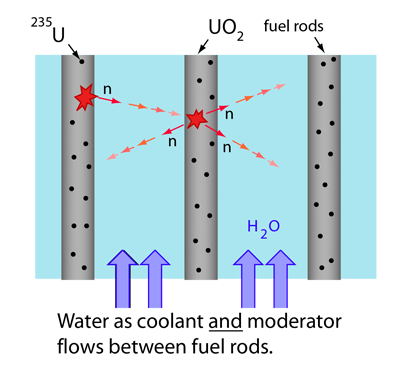Light Water Reactors
The nuclear fission reactors used in the United States for electric power production are classified as "light water reactors" in contrast to the "heavy water reactors" used in Canada. Light water (ordinary water) is used as the moderator in U.S. reactors as well as the cooling agent and the means by which heat is removed to produce steam for turning the turbines of the electric generators. The use of ordinary water makes it necessary to do a certain amount of enrichment of the uranium fuel before the necessary criticality of the reactor can be maintained.

|
The fission of a U-235 nucleus in one fuel rod releases an average of 2.4 fast neutrons per fission. These neutrons are slowed down or "moderated" by the water between fuel rods, increasing the cross-section for neutron capture and fission by a U-235 nucleus in a neighboring fuel rod. The two varieties of the light water reactor are the pressurized water reactor (PWR) and boiling water reactor (BWR). |
| HyperPhysics***** Nuclear | R Nave |